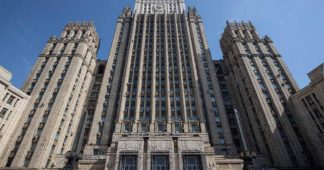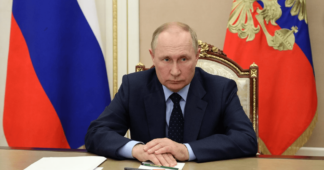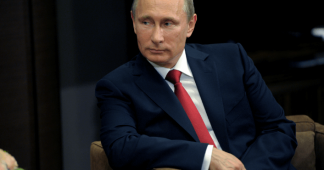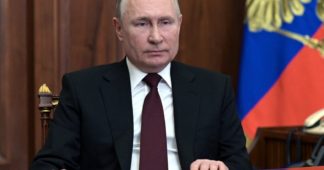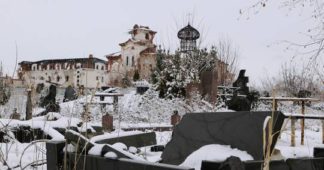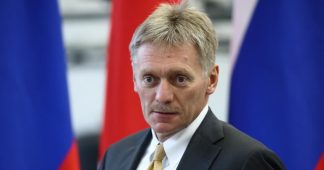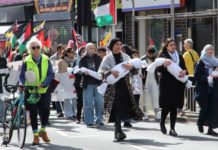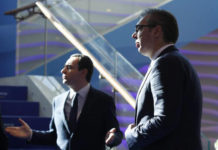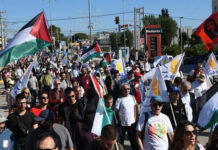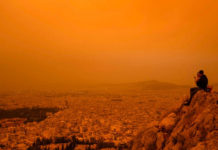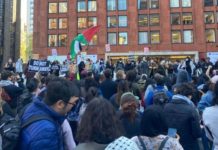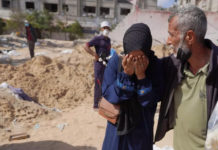Published on New Cold War, Oct 4, 2022
________________________
At the beginning of the month, Russian troops withdrew from the Kharkiv region (in the northeast of the Donbass region). By month’s end, referendums on political self-determination were taking place in the southern regions of Ukraine to join the Russian Federation, while in Russia, a partial military mobilization has been announced consisting of a callup to service of some 300,000 reservists.
The current situation has become a full-blown crisis due to the risk of nuclear conflict between Russia and the nuclear-armed NATO states and due to the loss of territories to Russia that the governing regime in Kyiv has been powerless to stop.
The crisis is all a direct consequence of the U.S.-inspired coup in Ukraine in February 2014. Since that time, the Kyiv regime has used widespread violence and political repression to deprive the residents of several regions of Ukraine of their right to democratically determine the fate of their homeland. These regions are condemned to condemnation and violence by Kyiv solely on the basis of their family, national-cultural and historical ties, and due to political aspirations favoring affiliation if not unification with Russia. These ties and aspirations date back decades, to the years of Soviet Ukraine.
The saturation of the Armed Forces of Ukraine with Western weapons, the dispatch of newly conscripted Ukrainians in their hundreds of thousands to the front lines of military combat, and the continued arrival of a significant number of Western mercenaries has demonstrated to the Russian leadership that it is very difficult to continue its military operation in Ukraine with an army of 160,000 against a Ukrainian army of some one million. Russian military experts have increasingly begun to bluntly explain that the Russian Federation and the Donetsk and Lugansk people’s republics (the latter now formally members of the Russian Federation) are fighting directly with the NATO-led bloc of imperialist countries. Such a war can no longer be waged at half strength.
Some sections of the front line in Donbass were thin and all-but undefended by Russian and republican forces (which they term ‘Allied’ forces). So it was decided to withdraw from part of the Kharkiv region while Russia simultaneously announced a partial mobilization of its military reserves. In the Russian Federation, reserve servicemen under the age of 35 are eligible for mobilization. In total, Russia plans to call up 300,000 reservists. Their arrival should dramatically alter the situation at the front in Donbass. That change, in turn, threatens a full-fledged conflict with NATO, up to the use of nuclear weapons, should NATO continue its aggression against Russia and the people of Donbass.
The Russian website Readovka reported on September 27, “In any case, the situation of Ukraine’s manpower superiority on the battlefield is ending. Zelensky still has a window of opportunity to save Ukrainian statehood and enter a negotiation process on Russian terms. This is what Turkish president Erdogan also continues to hint. It seems that history is giving Zelensky a second chance not to make a critical mistake for Ukraine, but his decision will typically be made in London and Washington.”
Russia’s reserve military personnel must undergo retraining for at least two to three months before becoming fully operational. So the Armed Forces of Ukraine are trying to use this time by throwing more and more new units into battle.
The haste is also prompted by the referendums to join the Russian Federation that took place in the Donbass republics (Donetsk and Lugansk) and in the regions of Kherson and Zaporozhye controlled by the Allied forces. The referendums were held over five days from September 23 to 28, accompanied by the roar of Ukrainian artillery fire overhead. Members of election commissions stoically visited houses and apartments so that people could vote without endangering their lives. More than 100 international observers from 40 countries observed the voting process, mainly from the Third World countries (South Africa, Syria, Togo, Venezuela, Brazil, Uruguay).
By the fourth day of voting in the Donetsk People’s Republic, 90 per cent had voted to join the Russian Federation. In the Lugansk People’s Republic, according to Elena Kravchenko, chairperson of the republic’s Central Election Commission, the turnout there after four days was 84 per cent.
In the Kherson region, according to Marina Zakharova, chairperson of the election commission, the turnout following the fourth day of voting was 64 per cent of the voter list, while in the Zaporozhye region, the head of the local Central Election Commission, Galina Katyushchenko, reported a turnout of 66 per cent. The totals including voting abroad, mainly in Russia.
According to the official results of the count overall, 90 per cent of those who voted were in favor of joining the Russian Federation, which is not surprising since pro-Russian sentiments have always been strong in these regions and many supporters of Kyiv had left. Associated Press reported grudgingly on September 27, “According to Russia-installed election officials, 93% of the ballots cast in the Zaporozhye region supported annexation, as did 87% in the Kherson region, 98% in the Lugansk region and 99% in Donetsk.”
The announced results closely coincide with the results of exit polls conducted by the Crimean Republican Institute for Political and Sociological Research. Many of the participants in the referendum defiantly tore up their Ukrainian passports after voting. Some explained this as their protest against the Ukrainian army’s continued shelling of civilians and civilian neighborhoods in regions that no longer wish to be part of that country.
In all elections since 2014 in Ukraine-controlled territory, all left-wing or pro-Russian parties have been banned. There have been no polling stations in the Russian Federation during elections in Ukraine, although many millions of Ukrainians live there.[See note #1 below.]
Let us recall that the second largest ethnic group in Russia (after Tatars) is composed of Ukrainians. And that the decision of the Russian authorities to accept these new territories into the Russian Federation is due, in large part, to systemic lobbying for such by Ukrainians and former citizens of Ukraine.
Referendum participants were accused in advance by Kyiv of ‘treason’. Naturally, neither Kyiv nor the Western countries are recognizing the results of the vote, so fighting will continue. But the difference brought about by the vote is highly significant. As the Russian Federation formally accepts the four regions into membership, they will henceforth be considered as Russia territory. Any military actions against them by the Armed Forces of Ukraine will be seen as foreign aggression and invasion. The Russia government has warned that any direct threat to its territory and sovereignty would bring into the conflict its entire military arsenal, potentially including nuclear weapons.
Western politicians, especially in Britain, are reassuring Kyiv. They are pushing for an escalation of hostilities. Some Telegram channels, citing British sources, are also reporting that Britain may ‘lease’ several nuclear warheads to Kyiv.
Russian Foreign Ministry spokeswoman Maria Zakharova claims that the West is peddling the subject of ‘nuclear weapons’ in order to serve as pretext for providing Kyiv with nuclear weapons. She told her weekly media update on September 27, “The nuclear topic has been introduced into political discourse by the West. Why is this so, why exactly is the West raising this? Everything began with statements by the Kyiv regime and Zelensky months ago about the need for Kyiv to have nuclear weapons. This discourse could be used in different ways as a practical and political factor. Of course, this had precedents, it did not start in 2022. It has been introduced during the past several decades by the Washington-sponsored Ukrainian political ‘establishment’,” Zakharova said.
In Ukrainian media, the threat of a nuclear catastrophe is treated very lightly. This was demonstrated by the regular shelling of the Zaporozhye Nuclear Power Plant by the Armed Forces of Ukraine this past summer. As late as September 30, there was a shelling attack against the ZNPP by Ukraine, causing a fire that was extinguished.
One even finds in Ukrainian media opinion saying that the Russian Federation should be provoked into making a nuclear strike against Ukraine because this would further isolate Russia at the international level. Naturally, those who use such language are confident in their own personal safety, or they are acting recklessly as mouthpieces for London and Washington.
Ukrainian television star and journalist Diana Panchenko worked at the television channel NewsOne until it was closed by the Zelensky regime. She then had to flee from political repression. She wrote on Telegram on September 27 that Ukraine has ceased to be a sovereign country and even the threat of a nuclear conflict is not taken seriously by its authorities. “In this battle, my country, unfortunately, has little political standing. This is a war between the West and the Russian Federation. And the people of Ukraine are being held hostage. They are being fed with promises of quick victories and urged not to be afraid. But only fools do not fear. Is there still time for common sense? It is time to wake up, it is time for life.”
Our Ukrainian authorities no longer have much room for maneuver. They have relinquished voluntarily their will to act in accordance with their best interests. Instead, they act like zombies, blindly obeying a master while bringing the risk of nuclear apocalypse ever closer.
Galina Tretyakova, a deputy in the Ukrainian Rada from Zelensky’s ‘Servant of the People’ party and chairperson of the Rada’s Committee on Social Policy and Protection of Veterans’ Rights, has written on her Facebook page, as reported in Ukrainian media, that Ukrainians should buy potassium iodide tablets to be taken in case of radiation contamination. She provides instruction on what to do in case of a nuclear explosion, recommending that citizens should lie down on the ground with their heads turned away from the explosion’s epicenter.
Notes:
[1] Prior to February 2022, there were three million Ukrainians living in Russia (not counting residents of Crimea and the Donbass republics of Donetsk and Lugansk. Since the Russian military intervention began in February 2022, some 1.5 million more Ukrainians have moved to Russia, seeking safety and, in many cases, employment. Altogether, there are approximately 4.5 million Ukrainians living in Russia, the second-largest group of non-Russians by ethnicity in the country (after Tatars).
We remind our readers that publication of articles on our site does not mean that we agree with what is written. Our policy is to publish anything which we consider of interest, so as to assist our readers in forming their opinions. Sometimes we even publish articles with which we totally disagree, since we believe it is important for our readers to be informed on as wide a spectrum of views as possible.
